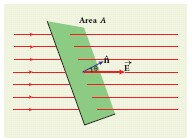St. Britto Hr. Sec. School - Madurai
12th Physics Monthly Test - 2 ( Electrostatics )-Aug 2020
-
-
-
-
-
-
-
-
-
-
-
Two isolated metal spheres A &B have radii R & 2R respectively and same charge q. Find which of
the two spheres have greater energy density just outside the surface of the sphere. -
When we rotate the blades, it starts to rotate as usual. Why it is so??
-
What is meant by quantisation of charges?
-
What is dielectric breakdown.
-
Two charge d spherical conditioners of radii R1 & R2 when connected by a conducting wire acquire charges q1 & q2 respectively. Find the ratio of surface charge densities in terms of their radii.
-
Write down Coulomb’s law in vector form and mention what each term represents.
-
A charge Q μc is placed at the centre of a cube what would be the
(i) flux through one face?
(ii) flux passing through two opposite faces of the cube?
Electric flux through whole cube \(\frac { Q }{ { \varepsilon }_{ 0 } } \) -
What are induced dipoles.
-
What is the work zone by the field in moving a small positive charge from A to P? Given reason.
-
Give a comparison of electrical and gravitional forces?
-
-
What are Polar molecules.
-
What are Polar molecules.
-
-
If a point charge is rotated in an arc of radius r around a charge q, what will be the work done. Explain.
-
Two concentric metallic spherical shells of radii Rand 2 R are given charges Q1 & Q2 respectively. The surface charge density on the outer surfaces of the shells are equal. Determine the ratio Q1=Q2.
-
What is mean by ‘Electric field lines’?
-
What orientation of an electric dipole in a uniform electric field corresponds to its
(i) stable and
(ii) unstable equilibrium? Depict the orientations. -
-
The electric potential in region is represented as V = 2x +3y - z. Obtain an expression for electric field strength.
-
Two insulated charged copper sphere A and B have their centres separated by a distance of 50cm.
(i) What is the force of electrostatic repulsion, if the charge on each is 6.5 X 10-7C and the radii of Aand B are negligible compared to the distance of separation?
(ii) What is the force of repulsion, if each sphere is charged double the above amount and the distance between them is halved?
-
-
Consider a point charge +q placed at the origin and another point charge -2q placed at a distance of 9 m from the charge +q. Determine the point between the two charges at which electric potential is zero.
-
Derive an expression for the torque experienced by a dipole due to a uniform electric field.
-
An electric dipole of length 4cm, when placed with its axis making an angle of 60° with a uniform electric field, experiences a torque of 4√3 Nm. Calculate the potential energy of the dipole, if it has charge ±8nC.
-
A copper slab of mass 2g contains 2 x 1022 atoms. The charge on the nucleus of each atom is 29e. What fraction of the electrons must be removed from the sphere to give it a charge of +2μC?
-
Explain in detail the Electrostatic Potential difference between the charges.
-
An infinite number of charges each equal to q are placed along X-axis at x = 1, x = 2, x = 3, x = 4, x = 8 and soon. Find the electric field at the point x = 0 due to this set up of charges.
-
Calculate the electric flux through the rectangle of sides 5 cm and 10 cm kept in the region of a uniform electric field 100 NC-1. The angle θ is 600. Suppose θ becomes zero, what is the electric flux?

-
Derive the expression for resultant capacitance, when capacitors are connected in series and in parallel.
-
Devise an arrangement of three point charges separated by finite distance that has zero electric potential energy.
